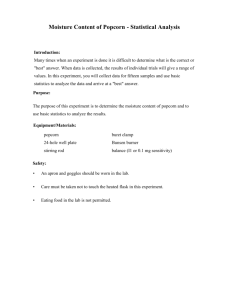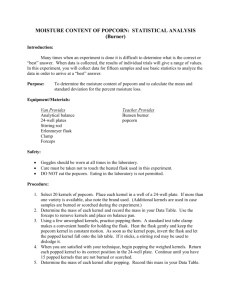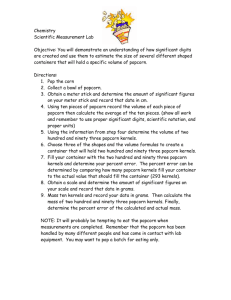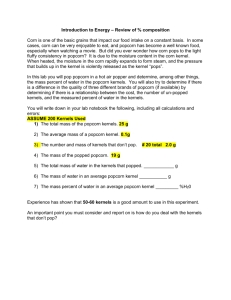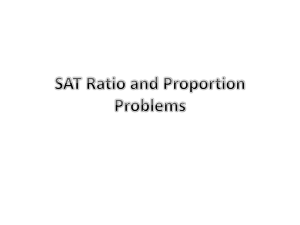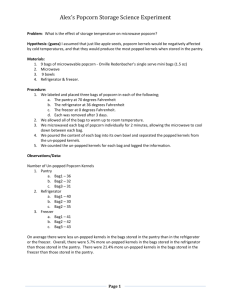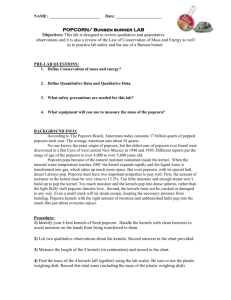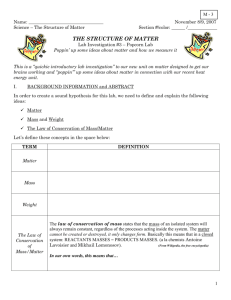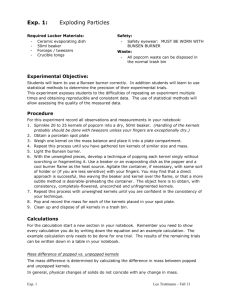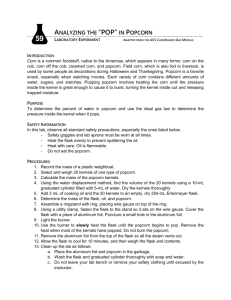Popcorn is a tasty snack
advertisement
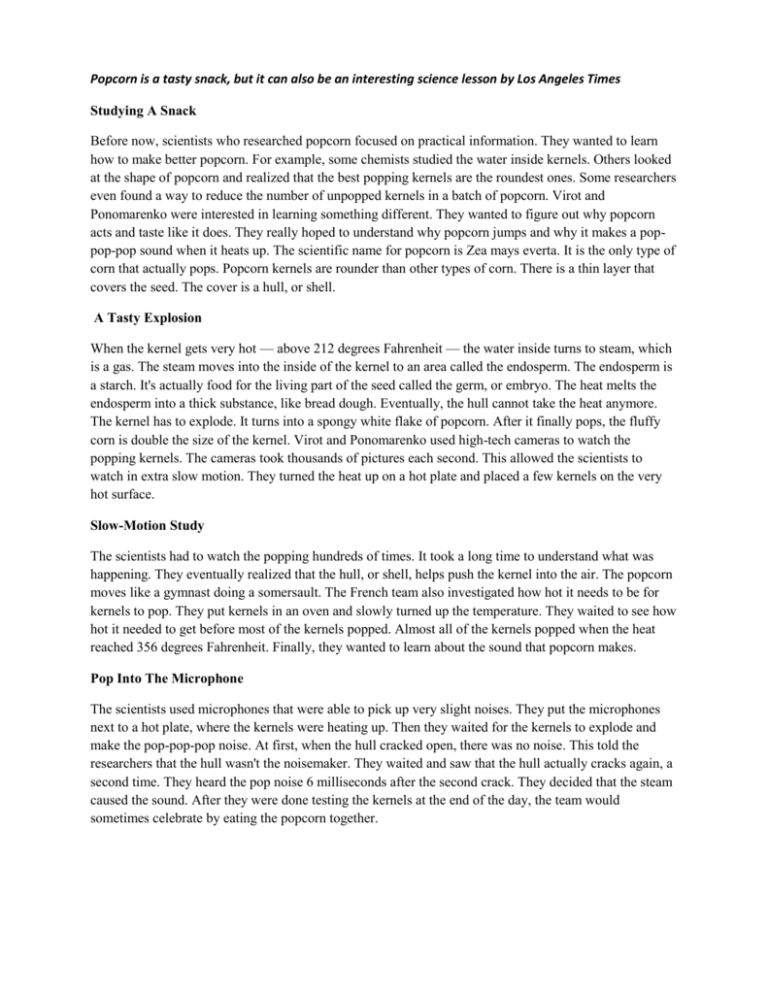
Popcorn is a tasty snack, but it can also be an interesting science lesson by Los Angeles Times Studying A Snack Before now, scientists who researched popcorn focused on practical information. They wanted to learn how to make better popcorn. For example, some chemists studied the water inside kernels. Others looked at the shape of popcorn and realized that the best popping kernels are the roundest ones. Some researchers even found a way to reduce the number of unpopped kernels in a batch of popcorn. Virot and Ponomarenko were interested in learning something different. They wanted to figure out why popcorn acts and taste like it does. They really hoped to understand why popcorn jumps and why it makes a poppop-pop sound when it heats up. The scientific name for popcorn is Zea mays everta. It is the only type of corn that actually pops. Popcorn kernels are rounder than other types of corn. There is a thin layer that covers the seed. The cover is a hull, or shell. A Tasty Explosion When the kernel gets very hot — above 212 degrees Fahrenheit — the water inside turns to steam, which is a gas. The steam moves into the inside of the kernel to an area called the endosperm. The endosperm is a starch. It's actually food for the living part of the seed called the germ, or embryo. The heat melts the endosperm into a thick substance, like bread dough. Eventually, the hull cannot take the heat anymore. The kernel has to explode. It turns into a spongy white flake of popcorn. After it finally pops, the fluffy corn is double the size of the kernel. Virot and Ponomarenko used high-tech cameras to watch the popping kernels. The cameras took thousands of pictures each second. This allowed the scientists to watch in extra slow motion. They turned the heat up on a hot plate and placed a few kernels on the very hot surface. Slow-Motion Study The scientists had to watch the popping hundreds of times. It took a long time to understand what was happening. They eventually realized that the hull, or shell, helps push the kernel into the air. The popcorn moves like a gymnast doing a somersault. The French team also investigated how hot it needs to be for kernels to pop. They put kernels in an oven and slowly turned up the temperature. They waited to see how hot it needed to get before most of the kernels popped. Almost all of the kernels popped when the heat reached 356 degrees Fahrenheit. Finally, they wanted to learn about the sound that popcorn makes. Pop Into The Microphone The scientists used microphones that were able to pick up very slight noises. They put the microphones next to a hot plate, where the kernels were heating up. Then they waited for the kernels to explode and make the pop-pop-pop noise. At first, when the hull cracked open, there was no noise. This told the researchers that the hull wasn't the noisemaker. They waited and saw that the hull actually cracks again, a second time. They heard the pop noise 6 milliseconds after the second crack. They decided that the steam caused the sound. After they were done testing the kernels at the end of the day, the team would sometimes celebrate by eating the popcorn together. SUMMARY (CHOOSE ONLY MAIN IDEAS, NO DETAILS. 3-5 SENTENCES MAX) _____________________________________________________________________________________ _____________________________________________________________________________________ _____________________________________________________________________________________ _____________________________________________________________________________________ _____________________________________________________________________________________ _____________________________________________________________________________________ _____________________________________________________________________________________ _____________________________________________________________________________________ _____________________________________________________________________________________
